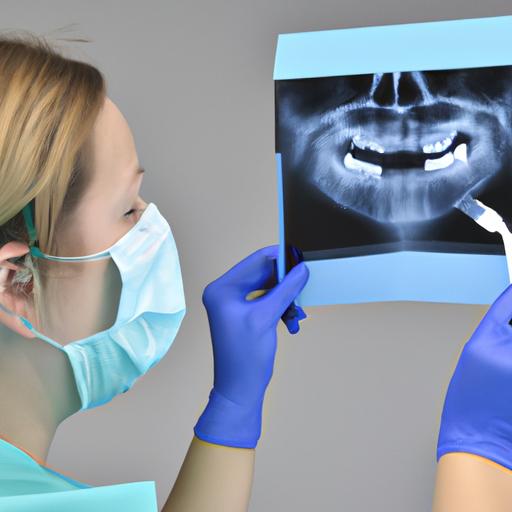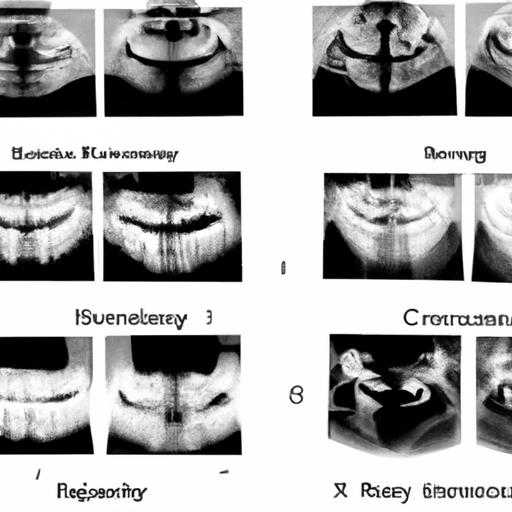
Discover the importance of x-rays during orthodontic treatment. Learn how they enhance precision and efficiency for successful outcomes.
Introduction
When it comes to orthodontic treatment, precision and accuracy are paramount. Orthodontists need a comprehensive understanding of patients’ dental structures to develop effective treatment plans and monitor progress. This is where X-rays play a crucial role. In this article, we will explore the importance of X-rays during orthodontic treatment and how they contribute to successful outcomes.

Orthodontic X-ray highlighting the benefits of X-rays during treatment.
Benefits of X-Rays During Orthodontic Treatment
Detection of Underlying Dental Issues
X-rays provide orthodontists with an in-depth view of a patient’s dental structure, uncovering any underlying issues that may impact treatment. These issues may include impacted teeth, missing teeth, or abnormalities in tooth formation. By identifying these conditions early on, orthodontists can tailor their treatment plans to address them effectively.
Accurate Diagnosis and Treatment Planning
X-rays allow orthodontists to obtain precise measurements of a patient’s teeth and jaw alignment. This information aids in diagnosing the specific orthodontic problem and creates a foundation for developing a personalized treatment plan. With X-rays, orthodontists can analyze tooth positioning, jaw relationships, and facial structure to determine the most appropriate course of action.
Monitoring Treatment Progress
Throughout the orthodontic treatment process, X-rays are used to monitor progress and make necessary adjustments. By comparing X-rays taken at different stages, orthodontists can evaluate the effectiveness of the treatment and ensure that the teeth and jaw are moving in the desired direction. This enables them to make timely modifications to the treatment plan if needed.

Illustration of various X-ray types employed in orthodontic treatment.
Types of X-Rays Used in Orthodontic Treatment
Panoramic X-Rays
Panoramic X-rays provide a broad view of the entire mouth, including the teeth, upper and lower jaws, sinuses, and nasal area. They are especially useful in orthodontics for evaluating overall dental health and identifying any potential anatomical concerns. Panoramic X-rays capture a wide range of information in a single image, aiding orthodontists in assessing the relationship between the teeth and the surrounding structures.
Cephalometric X-Rays
Cephalometric X-rays focus on capturing a side profile view of the head, including the teeth, jaws, and surrounding skeletal structures. This type of X-ray allows orthodontists to analyze the relationship between the teeth and the facial bones. Cephalometric X-rays are particularly valuable in orthodontic treatment planning, as they help determine the optimal positioning of the teeth and jaws for improved aesthetics and functionality.
Periapical X-Rays
Periapical X-rays provide a close-up view of individual teeth from root to crown. These X-rays are commonly used to examine specific teeth or areas of concern in detail. By capturing the entire tooth structure, periapical X-rays enable orthodontists to identify any abnormalities, such as root resorption or impacted teeth, which may require specific attention during treatment.
Cone Beam Computed Tomography (CBCT)
CBCT is a technologically advanced imaging technique that produces three-dimensional images of the teeth, jaws, and surrounding structures. CBCT scans provide orthodontists with a comprehensive understanding of a patient’s dental anatomy, facilitating precise treatment planning. This type of X-ray is particularly useful in complex cases, as it allows orthodontists to assess the spatial relationships between teeth and bones more accurately.
Safety Measures and Concerns Regarding X-Rays During Orthodontic Treatment
Minimal Radiation Exposure
Orthodontic X-rays involve minimal radiation exposure, and the benefits far outweigh the risks. Advances in technology have significantly reduced radiation levels in dental X-rays, making them even safer for patients. Additionally, lead aprons and thyroid collars are used to protect patients from unnecessary exposure to radiation during the imaging process.
Protective Measures for Patients
Orthodontic clinics follow strict protocols to ensure patient safety during X-ray procedures. Orthodontists and their staff are trained to operate X-ray equipment correctly and take necessary precautions. Patients are provided with lead aprons and thyroid collars to shield sensitive areas from radiation. These safety measures minimize any potential risks associated with X-ray imaging.
Safety Guidelines for Orthodontists
Orthodontists adhere to professional guidelines and regulations when it comes to X-ray usage. They follow the ALARA principle (As Low As Reasonably Achievable) to minimize radiation exposure while obtaining the necessary diagnostic information. Orthodontists are well-versed in the latest advancements in X-ray technology and stay updated on best practices to ensure patient safety.
Conclusion
X-rays are an indispensable tool in orthodontic treatment, enhancing the precision and efficiency of the entire process. By enabling orthodontists to detect underlying dental issues, accurately diagnose conditions, and monitor treatment progress, X-rays contribute to successful outcomes and improved patient experiences. With the implementation of safety measures and adherence to guidelines, orthodontists ensure that X-rays are used responsibly, prioritizing patient well-being. Embrace the benefits of X-rays during your orthodontic treatment journey and trust in the expertise of your orthodontist to achieve a healthy and beautiful smile.
Tips and Guide | Orthodontic Treatment HSE | What is Phase 1 Orthodontic Treatment?







